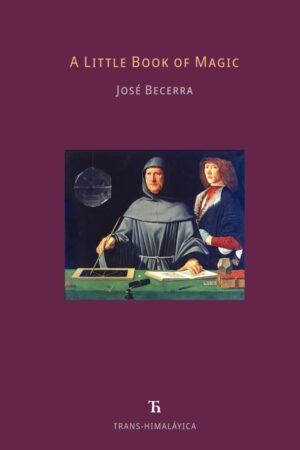The radially equilateral cuboctahedron (Eightfold Path) representing the perfect balance of forces (SERENITY): 8 triangles (tetrahedra) and 6 squares (semi-octahedra).
I would point out that serenity and peace are not identical. Peace must ever be temporary and refers to the world of feeling and to conditions susceptible of disturbance. It is essential to progress and an inevitable happening that every step forward is marked by disturbances, by points of crisis and chaos, replaced later (when successfully handled) by periods of peace. But this peace is not serenity and a chela is only permitted to dwell within the Master’s aura when serenity has been substituted for peace. Serenity signifies that deep calm, devoid of emotional disturbance which distinguishes the disciple who is focussed in a “mind held steady in the light.” The surface of his life may be (from the worldly angle) in a state of violent flux. All that he cherishes and holds dear in the three worlds may be crashing around him. But in spite of all, he stands firm, poised in soul consciousness and the depths of his life remain undisturbed. This is not insensitivity or a forced auto-suggestion, neither is it a capacity to exteriorise the consciousness in such a manner that individual events and happenings are ignored. It is intensity of feeling transmuted into focussed understanding. When this has been attained, the chela has the right to live within the aura of the Master. There is nothing now in him which will require the Master to sidetrack His attention from vital efforts to the unimportant task of helping a disciple. -The Tibetan Master
Magic and Geometry:
- Magicians use their will and imagination to interact with spatial networks, creating new geometric forms to align with their creative intentions or dismantle negative karmic patterns.
- The process of creation involves harmonizing with the divine geometric order, drawing on the interconnectedness of celestial bodies and their spatial relationships.
Reference: Magic: The Science of Creation by Vicente Beltrán-Anglada
A 3D design created in vZome. Use your mouse or touch to interact.

The construction of a cuboctahedron can be started from a cube or a regular octahedron, marking the midpoints of their edges, and cutting off all the vertices at those points. This process is known as rectification, making the cuboctahedron being named the rectified cube and rectified octahedron. Buckminster Fuller found that the cuboctahedron is the only polyhedron in which the distance between its center to the vertex is the same as the length of its edges. In other words, it has the same length vectors in three-dimensional space, known as vector equilibrium. The rigid struts and the flexible vertices of a cuboctahedron may also be transformed progressively into a regular icosahedron, regular octahedron, regular tetrahedron. Fuller named this the jitterbug transformation. Wikipedia
The cuboctahedron (B. Fuller’s “jitterbug”) can be progressively transformed into an icosahedron, octahedron, and tetrahedron by folding along the diagonals of its square sides.
In the context of the Vector Equilibrium (VE) — also known as the cuboctahedron — the seven axes of symmetry refer to the imaginary lines around which the shape can be rotated and still look the same. These axes pass through opposite faces of the polyhedron and are grouped as follows:
-
4 axes through opposite triangular faces (8 triangles total)
-
3 axes through opposite square faces (6 squares total)
Each axis defines a face-to-face spin — meaning you can rotate the VE around that axis and the geometry remains invariant.
References:
Geometry of Thinking: Isotropic Vector Matrix
“Where our eyes see nothing our brains, pondering the revelations of sharply tuned experiments, discover the Grid that powers physical reality.” -Frank Wilczek


